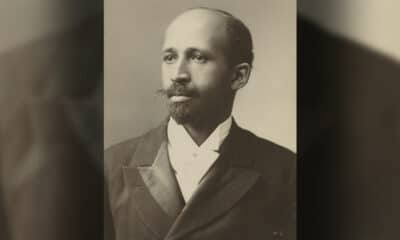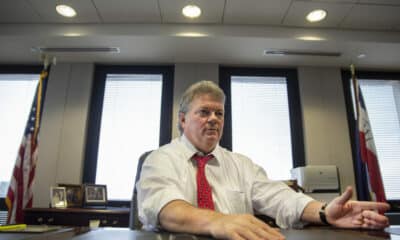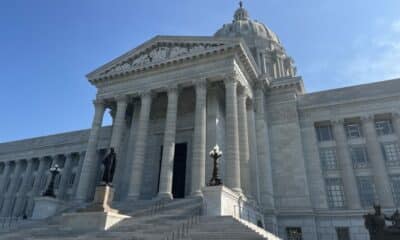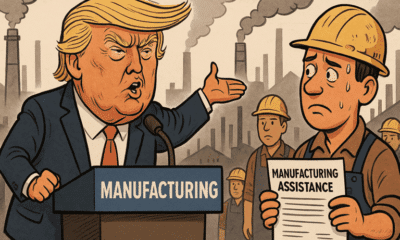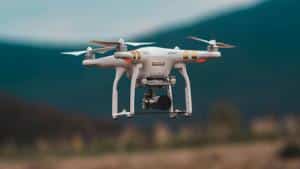Kelsey Norman, Rice University and Ana Martín Gil, Rice University
For more than a decade, Syrians have been the world’s largest refugee population.
More than 6 million Syrians have fled the country since 2011, when an uprising against the regime of Bashar Assad transformed into a 13-year civil war. Most ended up in neighboring countries such as Turkey, Lebanon, Jordan, Iraq and Egypt, while a sizable minority wound up in Europe. But the overthrow of the Assad regime in late 2024 by opposition forces led by the Islamist group Hayat Tahrir al-Sham has seemingly opened a window for their return, and tens of thousands of former refugees have since made the decision to go back to their homeland.
How many and who decides to go back, and the circumstances under which they reintegrate into Syrian society, will have enormous implications for both Syria and the countries they resettled in. It also provides an opportunity for migration scholars like ourselves to better understand what happens when refugees finally return home.
Previous research has shown that Syrian refugees who are trying to decide whether to return are motivated more by conditions in Syria than by policy decisions where they’ve resettled. But individual experiences also play an important role. Counterintuitively, refugees who have been exposed to violence during the Syrian civil war are actually more tolerant of and better at assessing the risk of returning to Syria, research has shown.
But such research was conducted while Assad was still in power, and it has only been several weeks since Assad fell. As a result, it’s unclear how many Syrians will decide to go back. After all, the current government is transitional, and the country is not fully unified.
The risk of return
In the month after Assad’s fall, about 125,000 Syrians headed home, primarily from Turkey, Jordan and Lebanon. But for the majority of those yet to return, important questions and considerations remain.
First and foremost, what will governance look like under the transitional government? So far, Hayat Tahrir al-Sham’s rule under Ahmed al-Sharaa has suggested the group will embrace inclusivity toward Syria’s diverse array of ethnic and religious minorities. Even so, some observers worry about the group’s prior connections to militant Islamist groups, including al-Qaida.
Similarly, initial fears about restrictions on women’s participation in public life have mostly been assuaged, despite the transitional government appointing only two women to office.
Syrians debating whether to return home must also confront the economic devastation wrought by years of war, government mismanagement and corruption, and international sanctions placed on the Assad regime.
Sanctions blocking the entry of medications and equipment, along with Assad’s bombing of infrastructure throughout the war, have crippled the country’s medical system.
In 2024, 16.7 million Syrians – more than half the country’s population – were in need of essential humanitarian assistance, even as very little was available. In early 2025, the U.S. announced that it was extending a partial, six-month reprieve of sanctions to allow humanitarian groups to provide basic services such as water, sanitation and electricity.
But rebuilding the country’s infrastructure will take much longer, and Syrian refugees will have to weigh whether they are better off remaining in their host countries. This is especially true for those who have worked to build new lives over a long period in exile from Syria.
The caretaker Syrian government will also have to address the issue of property restitution. Many individuals may want to return home only if they indeed have a home to return to. And the policy of forced property transfers and the settlement by Alawite and minority groups allied to the Assad regime in former Sunni areas vacated during the war complicates the issue.
Continued welcome in Europe?
Since the start of the civil war, approximately 1.3 million Syrians have sought protection in Europe, the majority of them arriving in 2015 and 2016 and settling in countries such as Germany and Sweden. As of December 2023, 780,000 individuals still held refugee status and subsidiary protection – an additional form of international protection – with the remainder having received either long-term residency or citizenship.
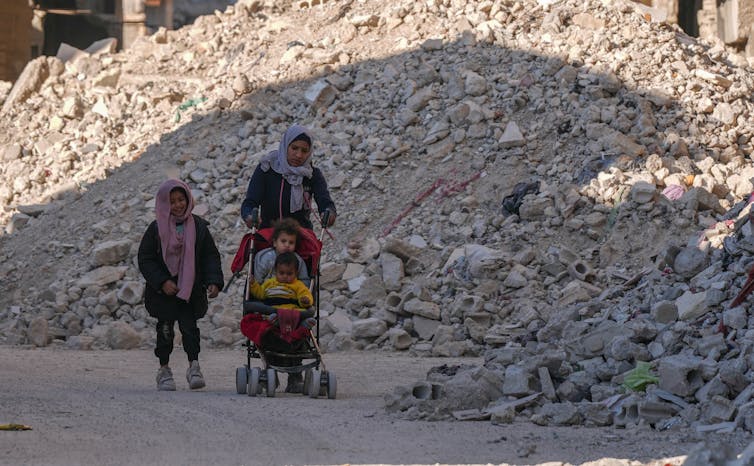
Ercin Erturk/Anadolu via Getty Images
Subsidiary protection was granted to those who didn’t meet the stringent requirements for refugee status under the Geneva Conventions – which requires a well-founded fear of persecution based on race, religion, nationality, political opinion or membership of a particular social group – but “would face a real risk of suffering serious harm” if returned to their countries of origin.
Recognition rates for Syrians have remained consistently high between 2015 and 2023, but the breakdown between subsidiary protection and refugee status has fluctuated over the years, with 81% receiving refugee status in 2015 versus 68% receiving subsidiary protection in 2023.
For Syrians in the EU who hold refugee status or subsidiary protection, as well as for those with pending asylum claims, the future is very uncertain. In accordance with the Geneva Conventions, EU law allows governments to revoke, end or refuse to renew their status if the reason to offer protection has ceased, which many countries believe is the case after Assad’s fall.
Since then, at least 12 European countries have suspended asylum applications of Syrian nationals. Some nations, such as Austria, have threatened to implement a program of “orderly return and deportation.”
Conditions in Turkey and Lebanon
A much larger number of Syrians obtained protection in neighboring countries, namely Turkey (2.9 million), Lebanon (755,000) and Jordan (611,000), though estimates of unregistered Syrians are much higher. In Turkey, which hosts the largest number of Syrian refugees, Syrians are afforded only temporary protection status.
In theory, this status allows them access to work, health care and education. But in practice, Syrian refugees in Turkey have not always been able to enjoy these rights. Coupled with anti-immigrant sentiments worsened by the 2023 earthquake and presidential election, life has remained difficult for many.
And while Turkish President Recep Tayyip Erdogan has publicly stated that Syrians should return home according to their own timeline, his previous scapegoating of the refugee population indicates that he may ultimately like to see them returned – especially as many in Turkey now believe Syrian refugees have no reason to stay in the country.
Syrians in Lebanon, which hosts the largest number of Syrian refugees per capita, face even greater economic and legal challenges. The country is not a signatory to the Geneva Conventions, and its stringent domestic asylum law has granted residency to only 17% of the more than a million Syrians who live in the country.
Lebanon has been pressuring Syrian refugees to leave the country for years through policies of marginalization and forced deportation, which have intensified in recent months with a government scheme to deport Syrians not registered with the United Nations. As of 2023, 84% of Syrian families were living in extreme poverty. Their vulnerability was exacerbated by the recent conflict between Hezbollah and Israel in Lebanon, which led 425,000 Syrians to escape war once again and return to Syria even though conditions at the time were not safe.
Testing the water
Offering go-and-see visits – whereby one member of a family is allowed to return to a home country to evaluate the situation and subsequently permitted to reenter the host country without losing their legal status – is the norm in many refugee situations. The policy is being used at present for Ukrainians in Europe and was used in the past for Bosnian and South Sudanese refugees.
The same policy could serve Syrian refugees now – indeed, Turkey recently implemented such a plan. But above all, we believe returns to Syria should be voluntary, not forced. Getting the conditions right for returning refugees will have enormous implications for rebuilding the country and keeping the peace – or not – in the years to come.![]()
Kelsey Norman, Fellow for the Middle East, Baker Institute for Public Policy, Rice University and Ana Martín Gil, Research Manager, Edward P. Djerejian Center for the Middle East, Baker Institute, Rice University
This article is republished from The Conversation under a Creative Commons license. Read the original article.





